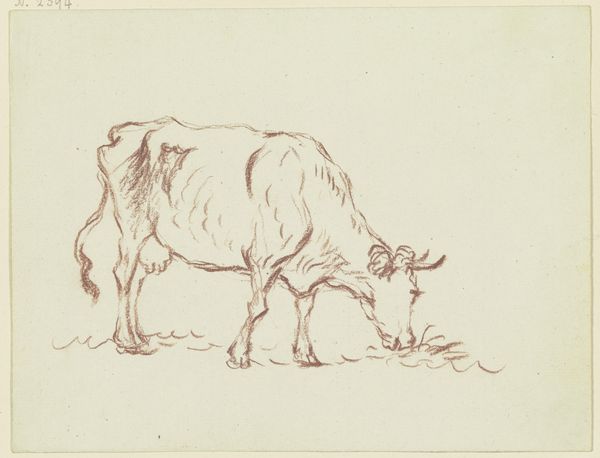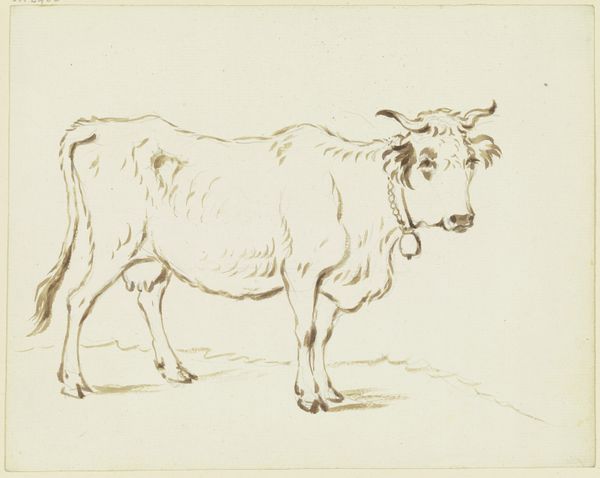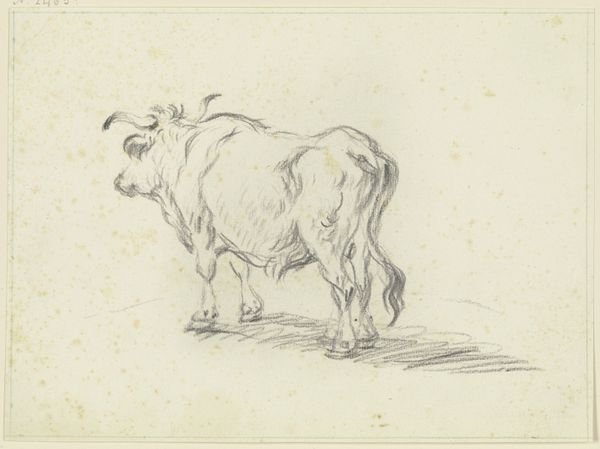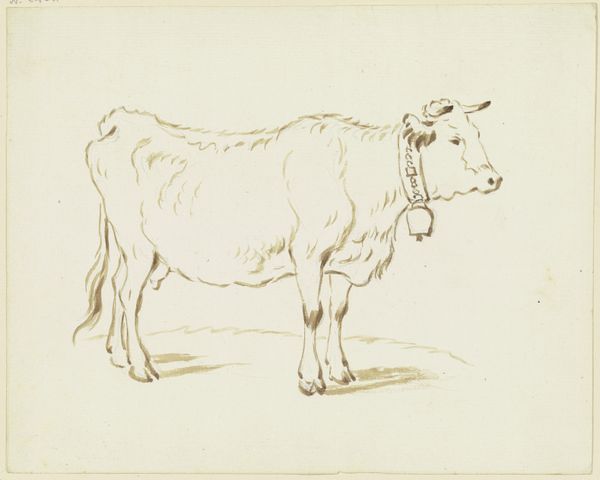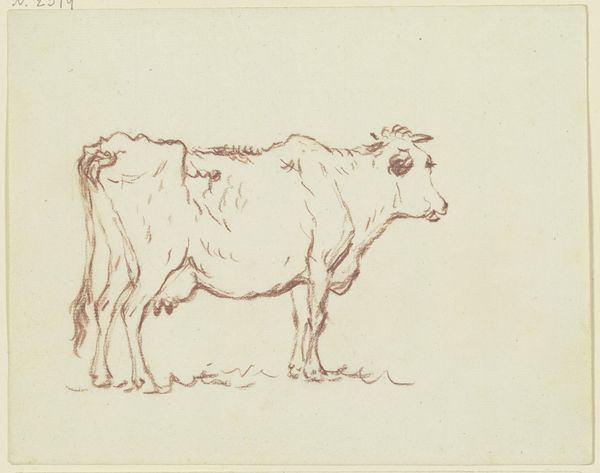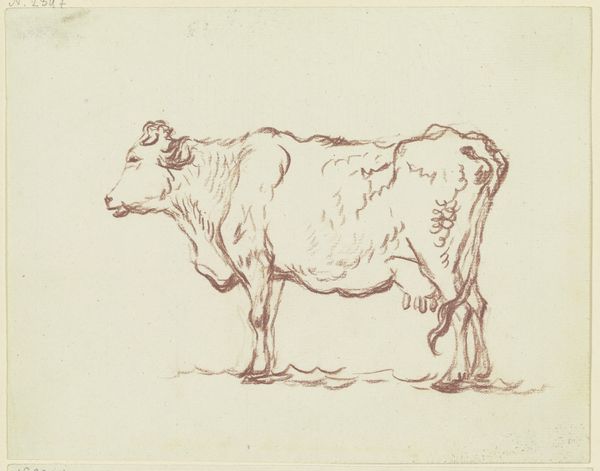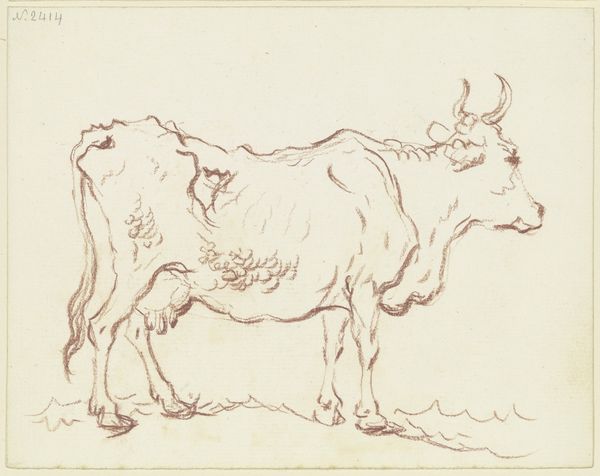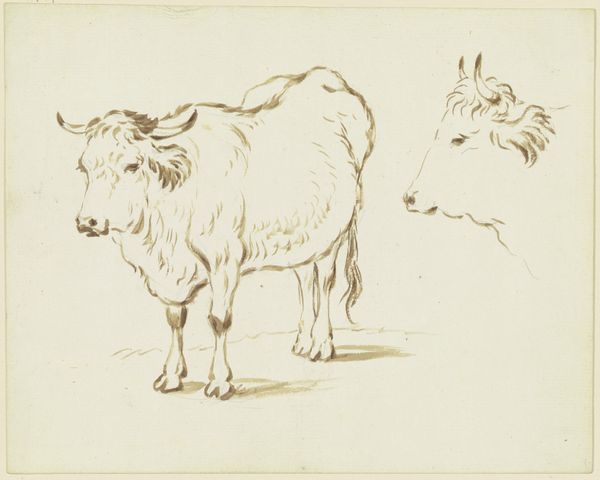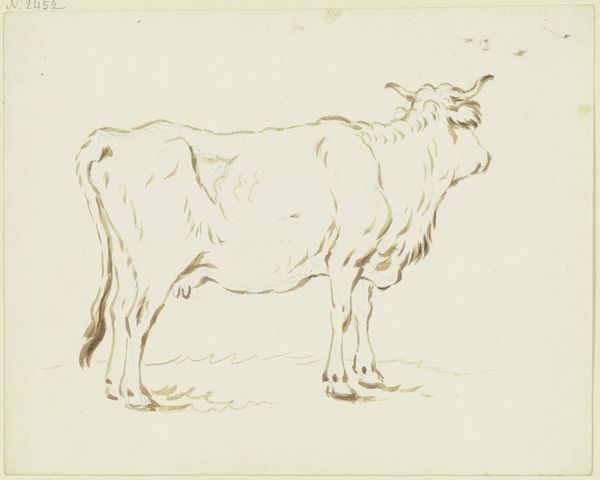
drawing, paper, ink
#
drawing
#
landscape
#
paper
#
ink
#
14_17th-century
#
realism
Copyright: Public Domain
Editor: This delightful drawing, simply titled "A Pig to the Left," is by Paulus Potter and done in ink on paper. There's a striking simplicity to it; you see the pig in profile, grazing. What catches your eye in terms of interpreting this drawing? Curator: I immediately consider the material reality: the ink itself, probably iron gall ink, and the paper, likely made from rags. Both were products of considerable labor. Was this paper high quality? Was the ink locally sourced? Potter’s access to these materials speaks to a certain level of privilege within the 17th-century Dutch economy. And how does the medium of drawing, traditionally seen as preparatory, affect our view of the subject, a pig? Editor: So you're suggesting the act of making the drawing is itself meaningful, and not just the final image? Curator: Precisely. We need to consider how the labor of creating the drawing, from preparing the materials to the physical act of rendering the pig, informs our understanding. Were Potter's depictions of animals like this made to promote husbandry, perhaps as records, or were these studies used for paintings later on? Understanding that unlocks more information. Editor: That's interesting! I hadn't thought about the materials that way. It’s also important to think if he sold sketches like this in the markets to a wider audience! Curator: Absolutely. And think about the market for such images – who consumed them and what purpose did they serve within Dutch society? That opens a lot of paths to discover. Editor: It certainly does change my view, thinking about this drawing less as just a pretty picture and more about the processes that created it, from labor to the culture of husbandry. Curator: Indeed, shifting our focus from mere representation to production gives us richer insight.
Comments
No comments
Be the first to comment and join the conversation on the ultimate creative platform.
